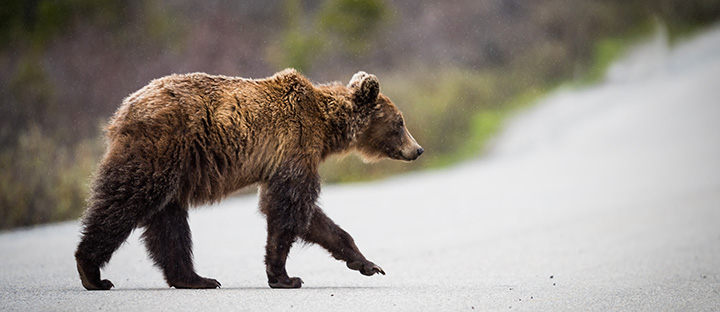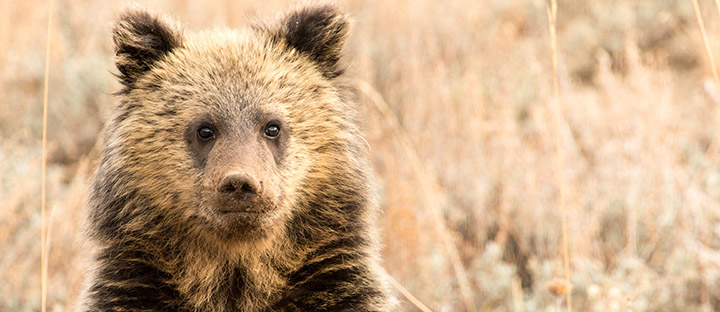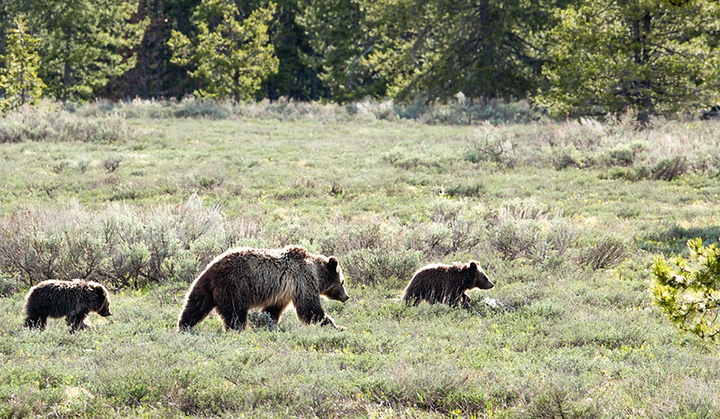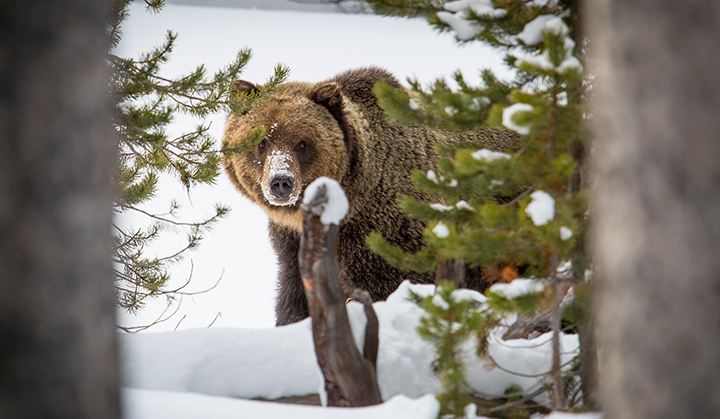Y2Y is concerned to hear Alberta is considering a review of grizzly bear’s provincial “threatened” status.
As an organization focused on connecting and protecting habitat so that people and wildlife thrive, Y2Y’s work includes protecting core habitat for grizzly bears and relinking isolated populations from the Greater Yellowstone Ecosystem through Canada’s Yukon Territory.
This work benefits grizzly bears, but also many other species. It involves working with rural communities, scientists and ranchers to see success in Alberta’s mountains and foothills, among other places.
Based on DNA analysis by Foothills Research Institute (fRI) research in Alberta’s seven bear management areas, there are an estimated 856 to 973 grizzly bears in the province.
While growing numbers are a positive sign, we have not yet crossed the finish line. Grizzly bears could still be doing better and need our continued support.
A positive trend, but not at the finish line
This growth is also not a happy accident or incidental. It comes thanks to hard work, careful planning and tough policy decisions.
This research shows populations are responding well to the decades of efforts communities, organizations, and past governments have put into the issue.
These counts do not indicate full recovery, but instead a continued potentially positive path to recovery from two bear management areas. There is a need to know what is happening more broadly across the province and ensure an upward trend over many years to fully ensure grizzly bears are on their way to recovery.
This positive growth will not continue on its own and requires managing grizzly bear habitat carefully now, and in the future.
Generally, across the Yellowstone to Yukon region, grizzly bears continue to struggle. Y2Y’s concern remains over the inadvertent creation of isolated islands of habitat for the bears or fragmentation where small populations of bears cannot be sustained.
This happens due to poorly planned developments, sweeping land-use decisions, an increase in roads or unmanaged recreational access.
Coal mining or park delistings could undo this progress
If the provincial government continues to make problematic decisions affecting both people and wildlife on the eastern slopes of the Rockies, including those regarding coal mining and park closures and delistings, we cannot expect this trend of grizzly bear recovery to carry on.
For example, Alberta’s grizzly bears are thriving where their critical habitat is secure. Areas where linear density thresholds have been exceeded are areas where bear populations suffer. Allowable linear density of roads and other human-made linear features is a scientifically determined threshold beyond which animals like grizzly bears will be affected.
The expansion of new roads related but not limited to forestry and exploratory coal mines are problematic because in many places the recommended linear density has already been exceeded. This means we need to decommission roads, not add more.
Yet another threat is deregulation of existing provincial parks. By allowing more infrastructure and activities in the places grizzly bears rely on for secure habitat, the negative impacts could affect bear populations.
Effective grizzly bear management extends beyond hunting and statements along these lines oversimplify a complex matter. Connectivity and coexistence measures also are critical in this success — Y2Y will continue to support bear aware education programs and continued efforts to connect and protect habitat.
A landscape that can support a grizzly bear hunt to manage the population would mean we’d reached a landmark moment, and that grizzly bears had fully recovered. But early indications show that Alberta is not there yet.
Even British Columbia, with an estimated 15,000 grizzly bears, is currently assessing management plans after halting the hunt in 2017.
We need to continue to improve key habitats to fully restore a long-term viable and connected grizzly bear population. Now is not the time to remove threatened status from these iconic symbols of nature.
As Canada and the world face a future with the major impacts of climate change an everyday reality, this is not the time to let up on our efforts to help grizzly bears and other species at risk.
Grizzly bears are an important tool to focus conservation efforts
Grizzly bears are often referred to as an “umbrella” or “surrogate” species. This is because science shows when grizzly bears thrive, other species living in the same areas will generally thrive, too.
The biggest threats to grizzly bear populations are habitat loss and human-caused deaths including roads and coexistence issues. This is especially true for young bears still learning to live alongside people.
Recent research shows that motorized access into grizzly bear habitat can have significant negative consequences for the bears. This impacts habitat use, home range selection, movements, population fragmentation, survival, and reproductive success.
Where there’s overlap between people and bears, studies show most grizzly bears over the age of two are eventually killed by people. Almost all of those deaths are within 100m of a road — most are shot, not hit by vehicles.
References and research cited
- Resource roads and grizzly bears in British Columbia and Alberta, Canada (Proctor et. al., 2018)
- Effects of roads and motorized human access on grizzly bear populations in British Columbia and Alberta, Canada, Proctor et. al., Ursus, 2019(30e2), 16-39, (3 January 2020)
- Summary: 2018 Estimates of Grizzly Bear Populations for BMAs 4 and 7, fRI Research (March 2021)





